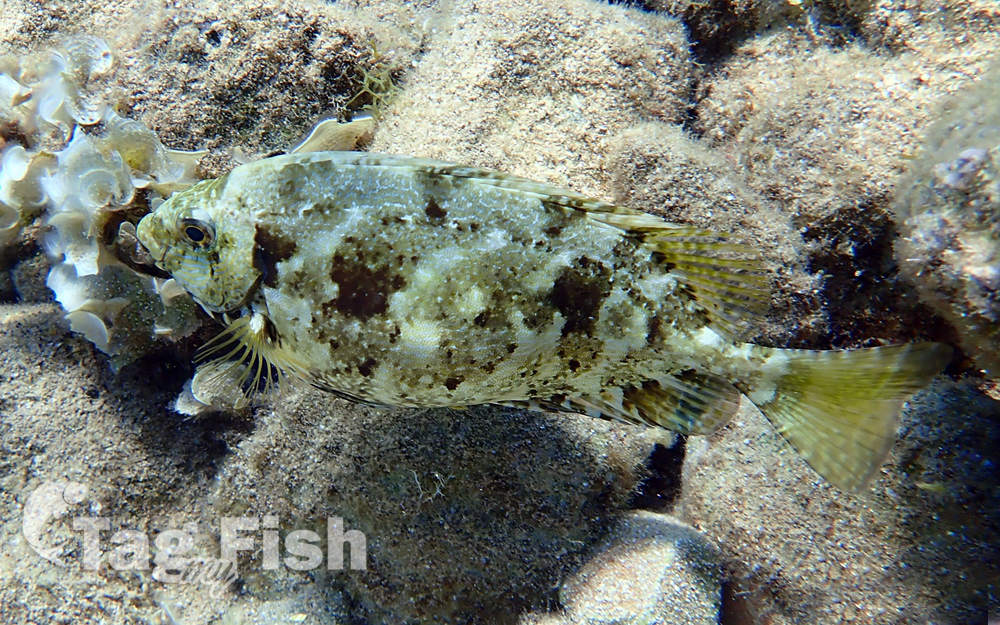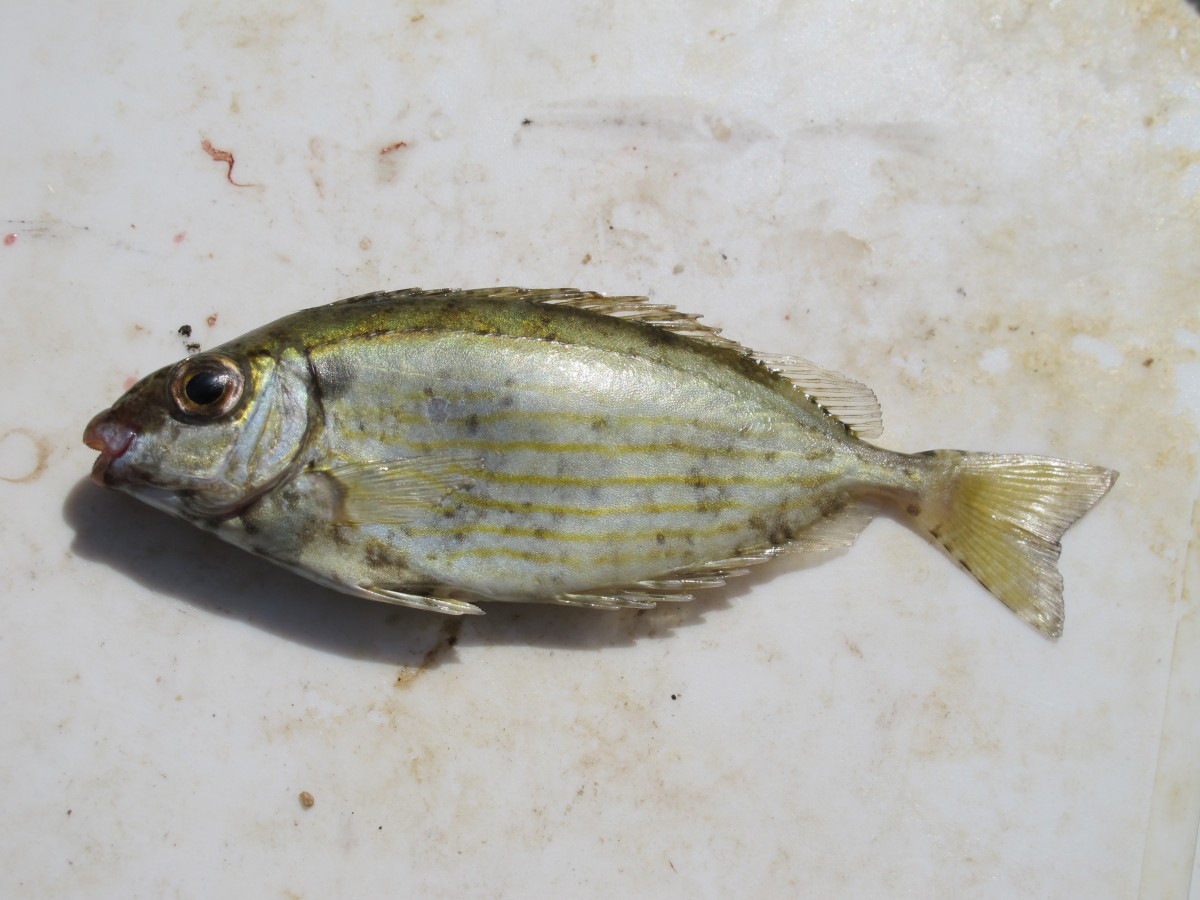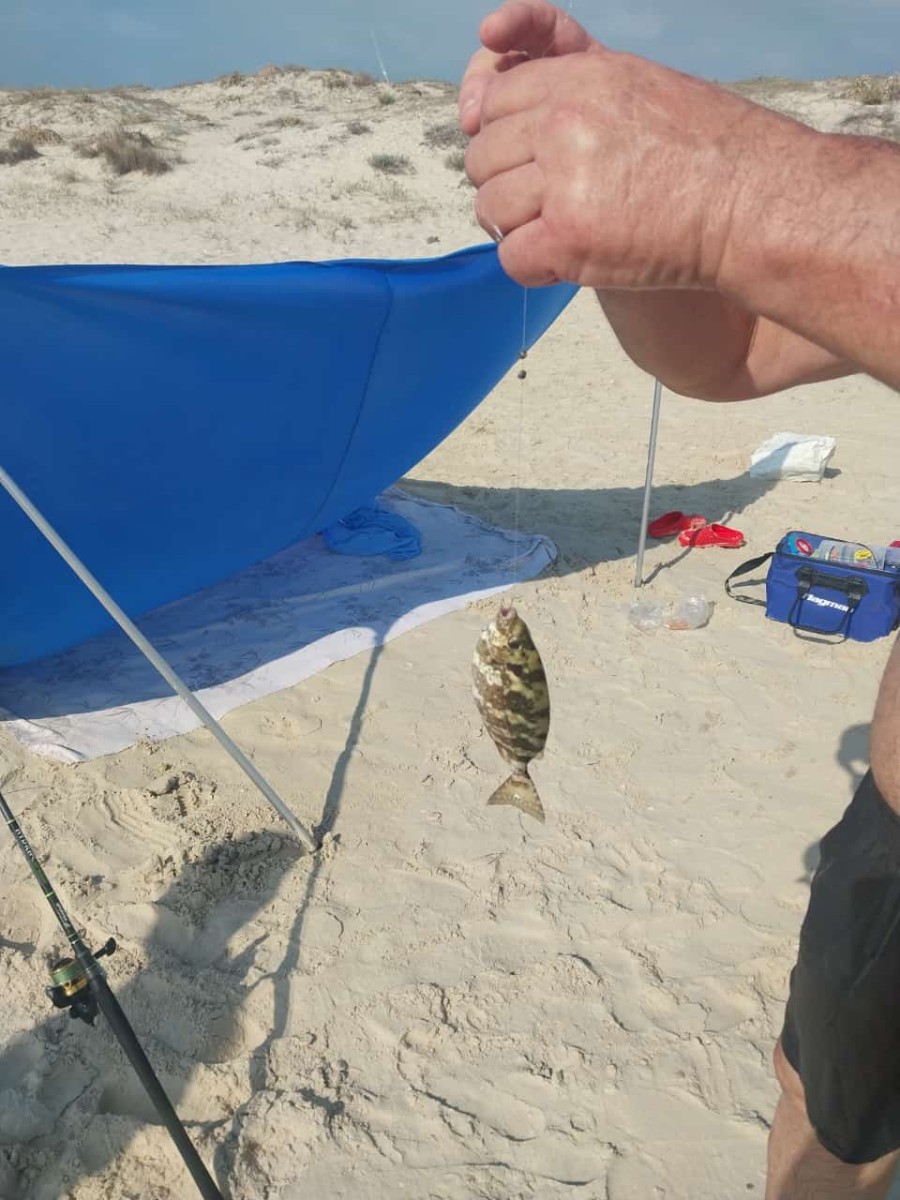Marbled spinefoot
(Siganus rivulatus)

Classification
General data
Siganus rivulatus, the marbled spinefoot, rivulated rabbitfish or surf parrotfish, is a gregarious, largely herbivorous ray-finned fish of the family Siganidae.
Its natural range encompasses the western Indian Ocean and the Red Sea from where it colonised the Mediterranean Sea by Lessepsian migration through the Suez Canal.
It is the type species of the genus Siganus.
Siganus rivulatus has a laterally compressed body which has a standard length of 2.7-3.4 times the greatest body depth. The dorsal fin has 14 spines and 10 soft rays, the anal fin has 7 spines and 9 soft rays, there are 23 vertebrae and the caudal fin is slightly forked. The longest spine in the dorsal fin is shorter than the distance between the front of the eye and the posterior edge of the operculum while the length of the longest dorsal ray is equal to or less than the length of the snout. The slender spines are barbed and bear venom.
The teeth are incisor-like with lateral cusps and are arranged in a single row in the jaws.
The body is covered in small embedded scales, except of the midline of the underside.
The colour is variable and it usually shows some darks spots and yellow wavy lines along the sides. The upper body tends to be grey-green to brown with a yellow abdomen or silvery white underside.
It usually grows to around 10–20 centimetres (3.9–7.9 in), sometimes up to 27 cm in standard length but the maximum recorded size is 40 cm.
S. rivulatus, like other rabbitfish, has venom glands associated with the spines in the fins and these spines can envenomate a human if the fish is handled incorrectly. The effect is very painful but there are no records of fatalities. The venom is a heat labile protein and any site where the body has been envenomated should be treated at as high a temperature as possible, 43-46 °C. Anyone so envenomated should also be treated for possible infection too.













